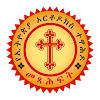
ሰዓታት
ሰዓታት በሀገራችን ተጀመረ የሚባለው በ፲፭ኛው ክፍለ ዘመን በአባ ጊዮርጊስ ነው። ሰዓታት በጐላ የታወቀው የሌሊት ጸሎት እንደሆነ ነው፤ ነገር ግን ከሁለት በመከፈል የመዓልትና የሌሊት ሰዓታት በመባል ይታወቃል። የሰዓታት ቀጥታ ትርጕም በየሰዓቱ የሚጸለይ ሰዓቶችን ተመልክቶ የሚደርስ ጸሎት እንደነበር ክፍሉ ራሱ ያመለክታል። ይኽም ዓይነት ጸሎት ከነስሙ በግሪክ ኦርቶዶክስና በአንግሊካን በሌሎችም እንዲሁ ይገኛል፤ ስሙንም «ኦሬስ፣ አዎርስ» ይበሉት እንጂ ትርጕሙ ሰዓታት ማለት ነው። በሀገራችን ሰዓታት የሚደረሰው በሌሊት ሲሆን በብዙ ገዳማትና አድባራት በዓቢይ ጾምና፣ በፍልሰታ እንዲሁም በጥቂት ገዳማትና አድባራት ግን ከዓመት እስከ ዓመት ሳይቋረጥ ይቆማል።የሰዓታቱ ክፍል
የሌሊት ሰዓታት ክፍል ሦስት ነው። ይኽውም፩ኛ አአትብ ወእትነሣእ
፪ኛ ሚካኤል ሊቀ መላእክት
፫ኛ ለኖኅ ሐመሩ ነው።
ዜማው ግዕዝ፣ ዕዝልና አራራይ የተቀላቀለበት ይሁን እንጂ ብዙው አራራይ ነው። በየክፍሉ ስለ ጌታችን፣ ስለ እመቤታችን በሰፊው ሲገልጽ ስለ ቅዱሳንም እንዲሁም አማላጅነታቸውን በመግለጥ ይናገራል። ድርሰቱም በግጥም መልክ የተዘጋጀ ነው። ከአአትብ ጀምሮ እስከ ሚካኤል ሊቀ መላእክት መጨረሻ ድረስ ያለው ብቻ የአባ ጊዮርጊስ ድርሰት እንደሆን ሲነገር፤ ከኖኅ ሐመሩ ከሚለው ጀምሮ ያለው በየጊዜው በሌሎች የተደረሰ ነው።
ለኖኅ ሐመሩን ፣ የእመቤታችንን ስብሐተ ፍቁር፣ ተፈሥሒ ማርያምን፣ ለአዳም ፋሲካሁ፣ ኦ ርኅርኅተ ሕሊናን የተባለው ዐፄ ልብነ ድንግል እንደደረሱት ይነገራል። የቅዱሳን ፣ የመላእክት ስብሐተ ፍቁር በየጊዜው እየተደረሰ የተጨመረ ነው። ከዚያ በኋላ ኪዳን ይደርሳል። ከመጀመሪያ አንስቶ እስከ መጨረሻው በየምዕራፉ እየገባ መስተብቁ ይጸለያል። ከዚህም ጋር ሰዓሉ ለ... እያለ ከሚሄደው ላይ በየጊዜው ተጨምሯል ምክኒያቱም ይህ ክፍል ከቦታ ቦታ ይለያያልና።
እንግዲህ ይህ መንፈስን ማራኪ የሆነ ድርሰት ከ፮ ክፍለ ዘመናት በላይ አስቆጥሯል ማለት ነው።
ይህ መተግበሪያም የሰዓታትን የጸሎት መጽሐፍ በሁለት ከፍሎ (በድብረ ዓባይና በተለምዶው ይትበኃል) የቀረበ ሲሆን ለአጠቃቀም እጅግ ቀላል በሆነ መልኩ በአማርኛም የተተረጎሙ ክፍሎች ተካተውበታል። ይህንን መተግበርያ ያለ ምንም ኢንተርኔት ግንኙንት የሚሰራ ስለሆነ በጸሎተ ሰዓታት ወቅት ከአበው ሊቃውንት ጋር ጸሎቱን ለማድረስ እንዲያገለግል ተደርጎ ተዘጋጅቷል።
Se’atat, the Horologium
There are two types of Horologium, for the day and for the night. The Horologium was composed by distinguished 15th century scholar, Abba Giyorgis of Gascha; during the ensuing it was gradually enriched by additional hymns and prayers. In big churches it is usual for monks, priests and deacons to conduct the Se’atat in the northern part of the ambulatory, while the Debteras are conducting a different service.The book of Se’atat contains the great public prayers of the Church, not necessarily said in public but always offered in the name of the church. It is recited at stated hours in churches, monasteries and outside. It is divided into seven parts known as canonical hours and each part is recited at its own hour. These hours are known as Night, Prime, Terce, Sext, None, Vespers, and compline. To be more exact the first of the canonical hours is night or matins (morning office) which is followed by lauds or praises of God. These are reckoned as one “hour”. The next division is prime or first because it is said at “first hour” or sun rise. Then terce or third, recited at the third hour. Sext or sixth at noon; none or ninth at three O’clock; Vespers is next, signifying evening services, and then comes compline or the completion.
The office contains psalms, discourses by the great fathers of the church, hymns and prayers. This office is an abundant treasure of grace. Deacons stand for the “gibre leilit” or night service and chant the “Se’atat” or Book of hours, serving till dawn. There was an arrangement under which a debtera held some church land and was bound in return to recite the Se’atat or Hours of the night at certain times, or held land for which he was bound to recite the “Hours of the Day” in the church. But the recital of the office is not obligatorily imposed on priests and deacons.
Metsihafe Seatat መጽሐፈ ሰዓታት is an Ethiopian Orthodox Tewahedo Church prayer book which mainly used as daily prayer by orthodox Christianity followers.






1 Comments
Egziabher ymesgen
ReplyDelete